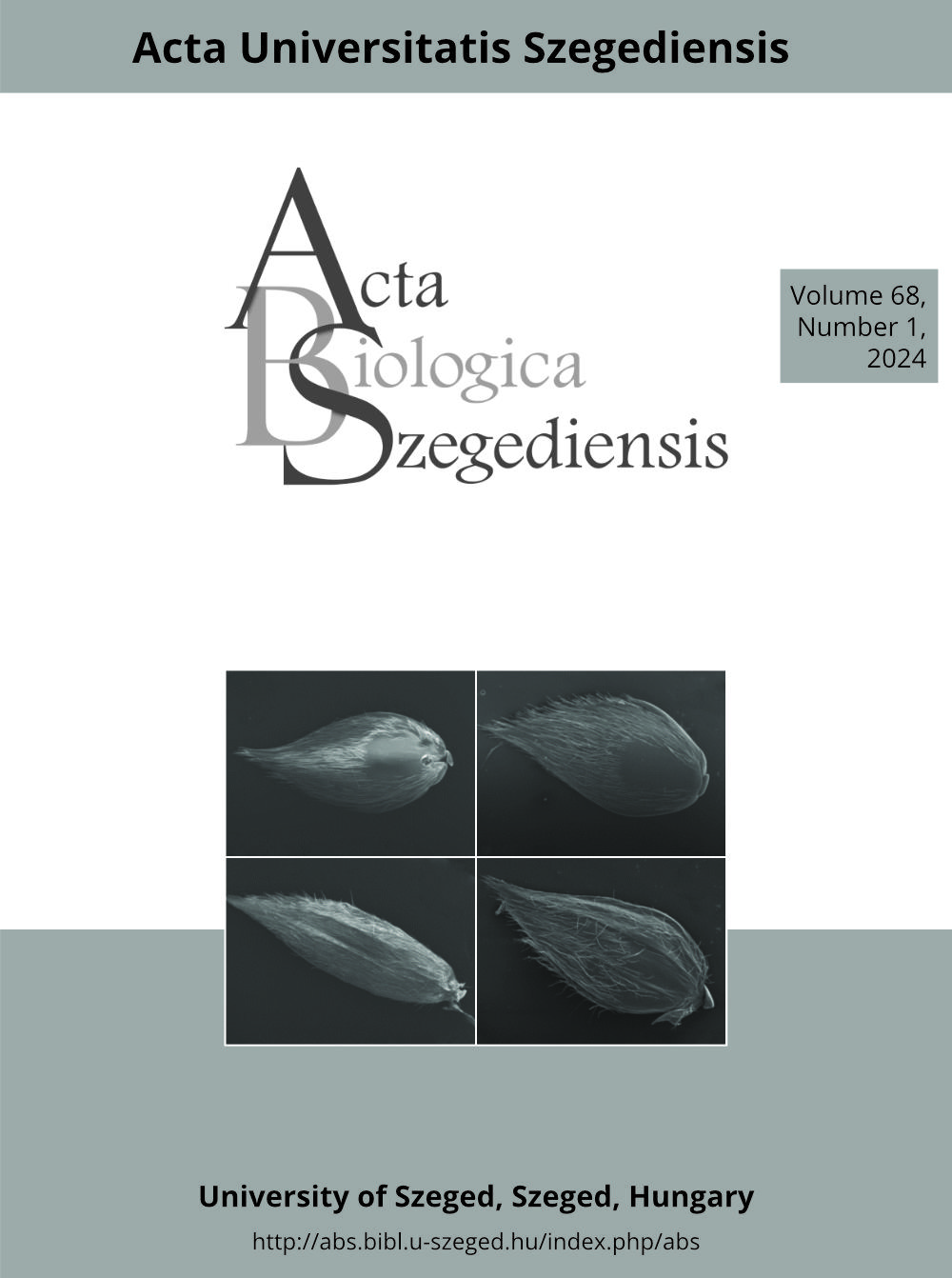Insights into the structure, function, and pathophysiology of Shigella dysenteriae through pangenome analysis
DOI:
https://doi.org/10.14232/abs.2024.1.46-53Keywords:
antibiotic resistance, bioinformatics, genetic variability, pangenome analysis, pathogenicity, Shigella dysenteriaeAbstract
Shigella dysenteriae, the causative agent of shigellosis, poses a significant global health threat due to its role in causing millions of cases of bacillary diarrhea and escalating antibiotic resistance. This study utilized bioinformatics analysis with the Pan Explorer to delve into the pangenome of S. dysenteriae. The aim was to uncover key bacterial functions, elucidate its pathogenicity and virulence, and identify factors contributing to genetic variability among strains. Results revealed a larger dispensable genome compared to the core genome and strain-specific genes. Metabolism-related Cluster of Orthologous Groups were predominant, followed by cellular processing and signaling pathways, while poorly characterized Cluster of Orthologous Groups had modest representation and those associated with information and storage processing were least prevalent. Notably, genes linked to the pathogenicity and virulence of S. dysenteriae were found in both dispensable and core genome regions, indicating their significance. Overall conservation was observed among strain genomes, but the open pangenome nature suggests potential for genetic exchange with other sources. These findings provide valuable insights for future microbial genomics research on S. dysenteriae.
Downloads
References
Ahmed K, Shakoori FR, Shakoori AR (2003) Aetiology of shigellosis in northern Pakistan. J Health Popul Nutr 1:32-39.
Baker S, Scott TA (2023) Antimicrobial-resistant Shigella: where do we go next? Nat Rev Microbiol 7:409-410.
Bengtsson RJ, Simpkin AJ, Pulford CV, Low R, Rasko DA, Rigden DJ, Hall N, Barry EM, Tennant SM, Baker KS (2022) Pathogenomic analyses of Shigella isolates inform factors limiting shigellosis prevention and control across LMICs. Nat Microbiol 2:251-261.
Dereeper A, Summo M, Meyer DF (2022) PanExplorer: a web-based tool for exploratory analysis and visualization of bacterial pan-genomes. Bioinformatics 18:4412-4414.
Kadhim BA, Alqaseer K, Al-Ganahi SA (2023) Identification and characterization of a novel lytic peptidoglycan transglycosylase (MltC) in Shigella dysenteriae. Braz J Microbiol 2:609-618.
Khan K, Jalal K, Uddin R (2023) Pangenome profiling of novel drug target against vancomycin-resistant Enterococcus faecium. J Biomol Struct Dyn 24:15647-15660.
Krzywinski M, Schein J, Birol I, Connors J, Gascoyne R, Horsman D, Jones SJ, Marra MA (2009) Circos: an information aesthetic for comparative genomics. Genome Res 9:1639-16 45.
Perrin A, Rocha EPC (2021) PanACoTA: a modular tool for massive microbial comparative genomics. NAR Genom Bioinform 1:lqaa106.
Tatusov RL, Galperin MY, Natale DA, Koonin EV (2000) The COG database: a tool for genome-scale analysis of protein functions and evolution. Nucleic Acids Res 1:33-36.Mir et al.53








